Placing a stone on a stone — the architectural idea behind a dolmen — has always been a distinct sign of architecture. This operation is recurrent throughout ages. The name for it is tectonics/order. The architectural order implies a social order.
The tectonics is the basis of all architecture from ancient stone and wood structures to modern metallic ones. Let us remember that at the turn of twentieth century when architecture had to define a new language, distinct from anthropomorphic motives of the classical order, the idea of tectonics served as a basis to establish a new lexicon for avant-garde architecture. Constructivism, Suprematism, Malevich’s Architectons, El Lissitsky’s Prouns are clear examples of this.
Architecture approaches its ideal when what is built (one element placed on another) is already architecture. Everything added belongs to the sphere of pictorial. The built stands in opposition to the picture. Architecture stands in opposition to representation. The depth stands in opposition to the surface.
On the other hand, a depth without a surface is inconceivable, unlike the surface lacking depth. Every depth is presented as a surface and on a surface. A façade, then, would inevitably occupy the place of tectonics. A façade is a relatively new invention and it coincides with the change in cultural attitude: from renaissance onward when it becomes clear that a sign not only refers to reality but can conceal as well.
From renaissance onward, the façade becomes an autonomous sign that is tasked to signify architecture itself. Without doubt, it retains symbolic connotations.
Facade of a palazzo is an example of uncertainty. It is at the same time tectonic and a mask; depth and surface. It bears the load of the building and at the same time reinforces the tectonic signification. It is a paradoxical mask: instead of concealing, it amplifies and doubles the iconic representation of its structural function.
Le Corbusier’s Dom-Ino cancels the very idea of a façade. Dom-Ino is the complete architecture. Here the external wall is indeed a mask (certainly, the outer wall serves to shell the building and contain climate conditions. For a building it is never a mask, but to architecture — always).
Glass curtain wall yearns to achieve dematerialization through the transparency. However, Mies follows renaissance model in the sense that the curtain wall of the Seagram building conveys tectonic nature of architecture through non-structural bronze profiles.
Richard England’s Lido aqua club (1987) is a type of mask behind which there is nothing. Yet, the mask keeps communicating architectural significations. In this case of simulacra the building is absent, while architecture is fully present.
The mask, a rigid structure is being replaced by its soft version — the veil. It is the sixth paradigm of poetics of architecture, which marks contemporary architectural landscape.
Contemporary architectural landscape suggests decomposition and fragmentation; mixed and polyphonic writing (following Barthes use of the term “écriture”) and syntagmatic configurations.
Such conceptual object is named veil since the physical veil (surface, envelope) has the properties of instability, decomposition, multiplicity of versions, and is disjunctive. The veils make evident the transition of architecture from tectonics to wrapping. The veil opens way for a free play of signifiers. This écriture enables the multiplicity of significations to take place.
The intricate network surface of the veil defies the traditional categories of architecture: structure / ornament, use / composition. The composition and ornament is always already consumed to serve a use. The veil as a decomposition and écriture suggests overcoming and undoing of this very opposition.
The veil emerges as the discourse on surfaces comes forward: “so, the double coded veils can be represented in Georgian language and the thesis — surfaces cover other surfaces is translates as veils cover other veils ” (Sh. Bostanashvili) and as emerging digital technologies made its virtual and physical samples possible to produce.
To conclude, both the wall and the veil enable enveloping. Both veil and wall are independent from the organization and structure of what they contain and present potential of free play of signifiers. The envelope is not burdened to represent any meaning, metaphor, finality, function but can play representation. Both themes enable realization of self reflexing text (constructum). Constructum being a new concept in poetics of architecture producing its own manifesto. Constructum initiates movement towards critical discourse on architecture.
The projects presented show the creative results of these reflections starting from the2000s.
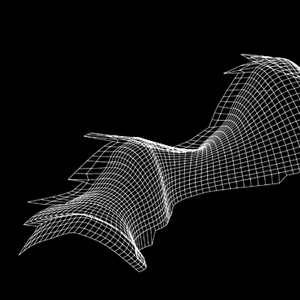 Graduation project "MountainHouse"
Graduation project "MountainHouse" 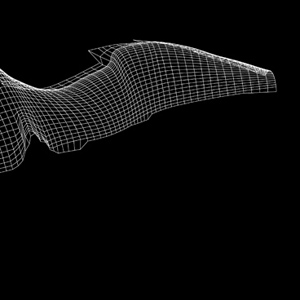 Graduation project "MountainHouse"
Graduation project "MountainHouse" 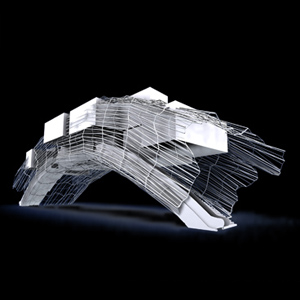 Bridge museum in Venice (competition entry)
Bridge museum in Venice (competition entry) 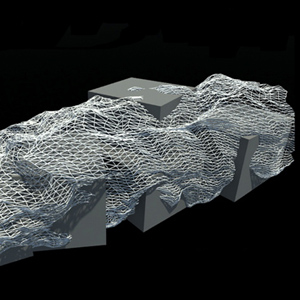 Veil: digital study
Veil: digital study 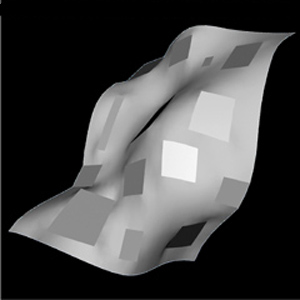 Veil: digital study
Veil: digital study 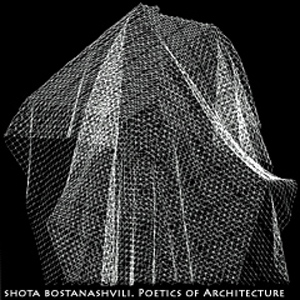 Veil: digital study
Veil: digital study 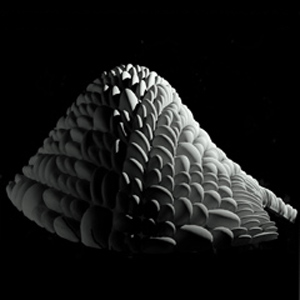 Veil: digital study
Veil: digital study 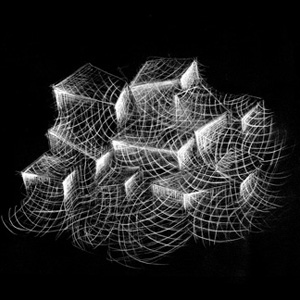 Veil for architectural design project: pencil study
Veil for architectural design project: pencil study 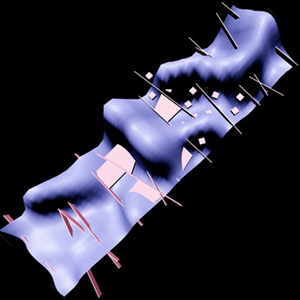 Veil for architectural design project: village center
Veil for architectural design project: village center 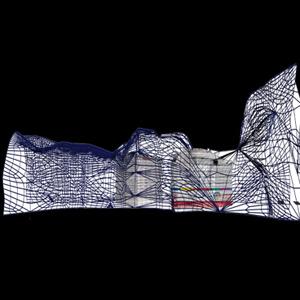 Veil for architectural design project: village center
Veil for architectural design project: village center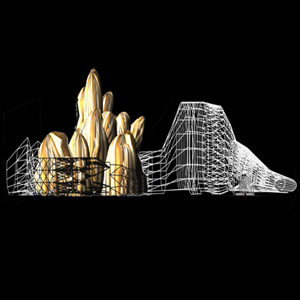 Veil for architectural design project: village center
Veil for architectural design project: village center 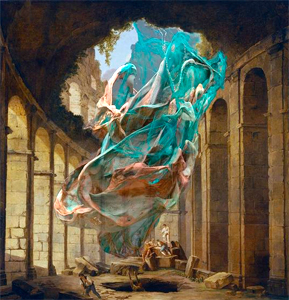 Poetics of Ruins: Veil
Poetics of Ruins: Veil  Poetics of Ruins: Veil
Poetics of Ruins: Veil 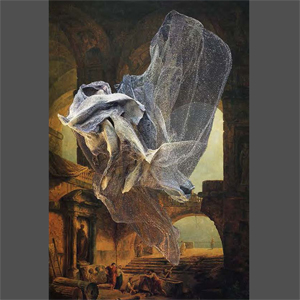 Poetics of Ruins: Veil
Poetics of Ruins: Veil 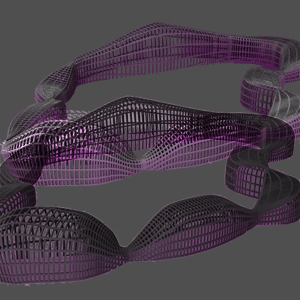 Veil for architectural design project: a prison
Veil for architectural design project: a prison 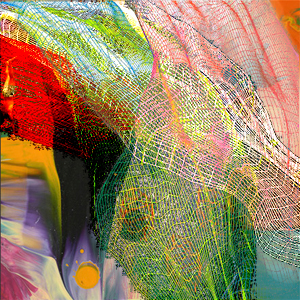 Veils + Stains
Veils + Stains 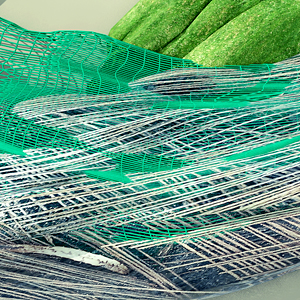 Veil for architectural design project: touris camp base
Veil for architectural design project: touris camp base 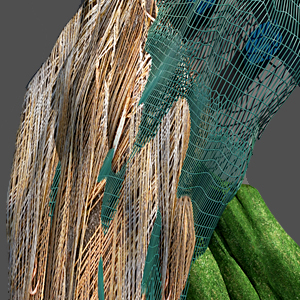 Veil for architectural design project: touris camp base
Veil for architectural design project: touris camp base 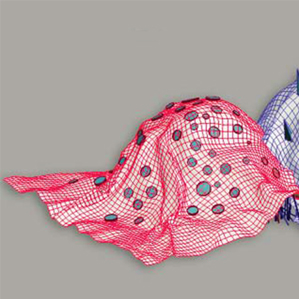 Veil for graduate thesis project
Veil for graduate thesis project 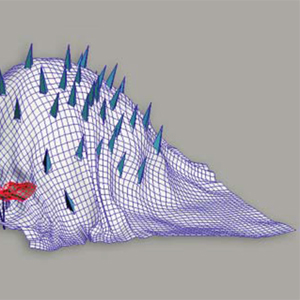 Veil for graduate thesis project
Veil for graduate thesis project 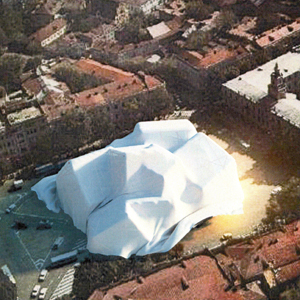 Veil for graduate thesis project: Theater
Veil for graduate thesis project: Theater  Space for prayer: Veil + Frame
Space for prayer: Veil + Frame 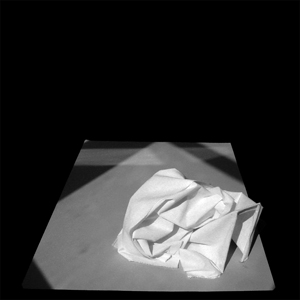 Space for prayer: Veil + Frame
Space for prayer: Veil + Frame 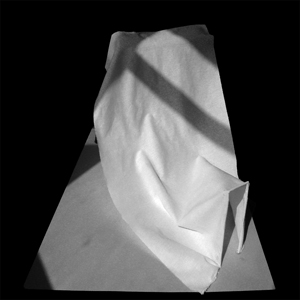 Space for prayer: Veil + Frame
Space for prayer: Veil + Frame